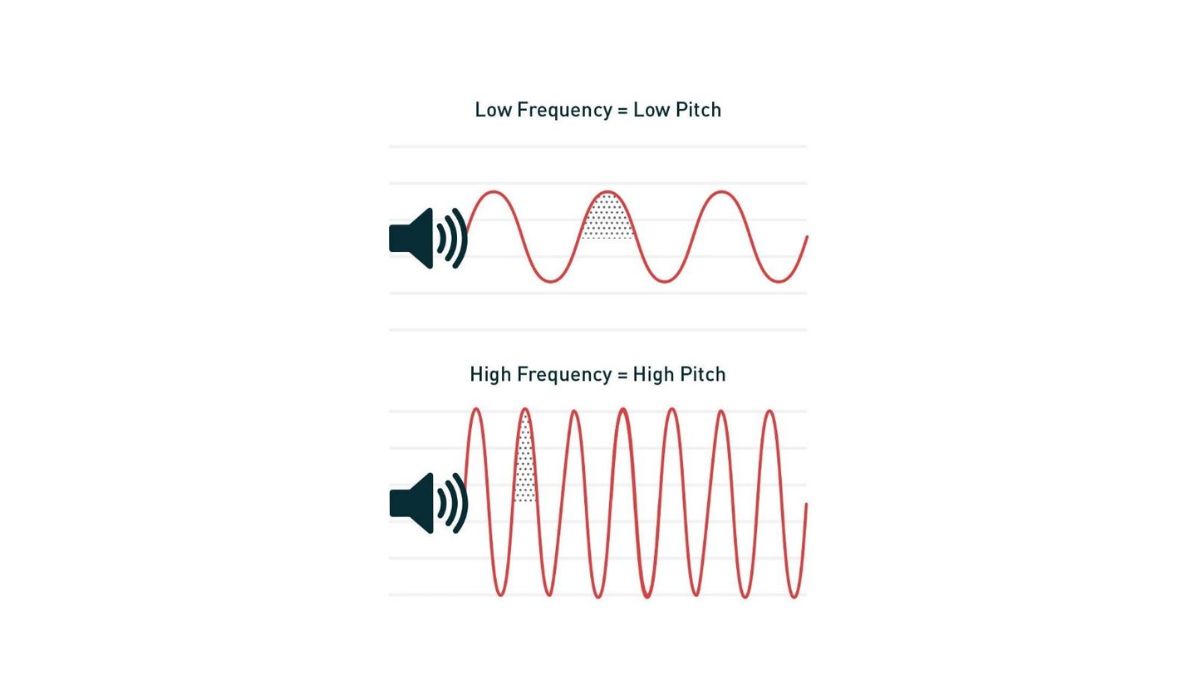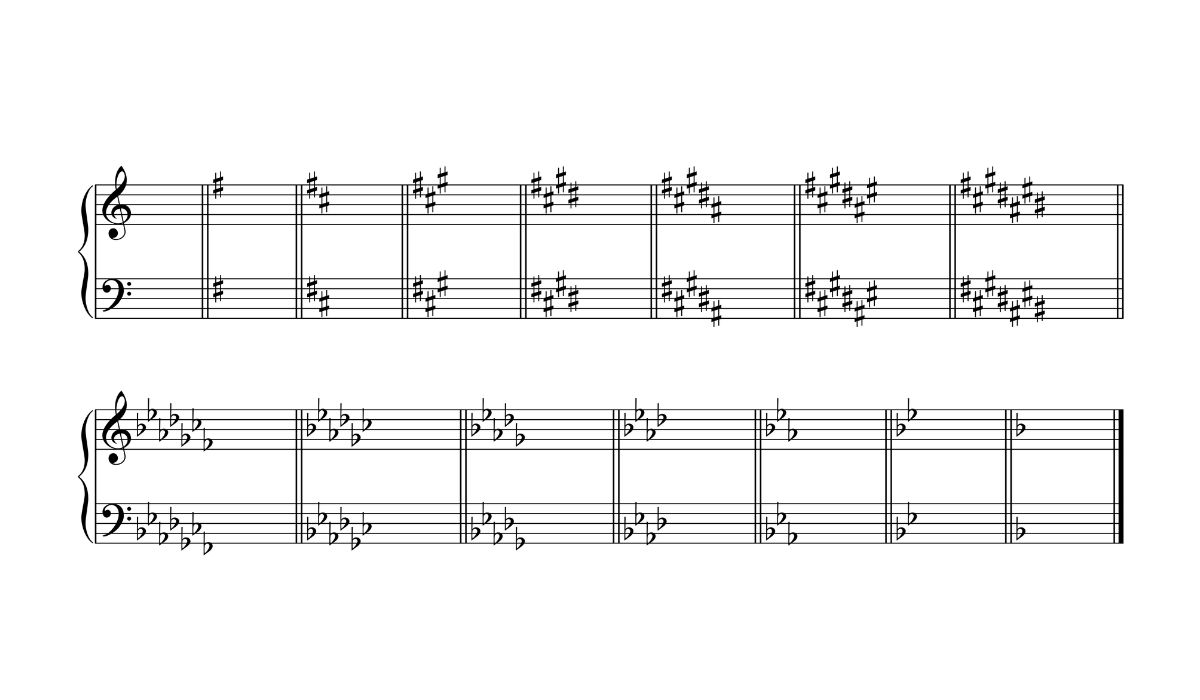Home>Events & Info>Frequency>What Is The Relationship Between The Pitch And Frequency Of A Sound Wave?


Frequency
What Is The Relationship Between The Pitch And Frequency Of A Sound Wave?
Published: February 18, 2024
Learn about the relationship between pitch and frequency of sound waves. Understand how frequency affects the perception of pitch in this comprehensive guide. Discover the key concepts behind frequency and its impact on sound.
(Many of the links in this article redirect to a specific reviewed product. Your purchase of these products through affiliate links helps to generate commission for AudioLover.com, at no extra cost. Learn more)
Table of Contents
- Understanding the Relationship Between Pitch and Frequency in Sound Waves
- Exploring the Nature of Sound Waves
- Unraveling the Interplay of Pitch and Frequency
- Exploring the Influential Elements Shaping Sound Characteristics
- Exploring the Practical and Theoretical Significance of Pitch and Frequency
- Embracing the Harmony of Pitch, Frequency, and Sound
Introduction
Understanding the Relationship Between Pitch and Frequency in Sound Waves
Sound is an integral part of our daily lives, from the melodious chirping of birds to the rhythmic beats of our favorite music. Have you ever wondered about the science behind the various pitches and frequencies that create these diverse sounds? Understanding the relationship between pitch and frequency in sound waves is a fascinating journey into the world of acoustics and physics.
When we talk about sound, we often refer to terms such as "pitch" and "frequency." These terms are interconnected and play a crucial role in defining the characteristics of any sound. The pitch of a sound refers to how high or low we perceive it to be, while frequency is a measure of the number of vibrations per second that create a sound wave. In simpler terms, pitch is what we hear, while frequency is what we measure.
In this article, we will delve into the intricacies of sound waves, explore the relationship between pitch and frequency, understand the factors that influence them, and examine the practical applications and implications of this fundamental concept. By the end of this journey, you will have a deeper appreciation for the science of sound and a clearer understanding of how pitch and frequency intertwine to produce the rich tapestry of auditory experiences that color our world.
Understanding Sound Waves
Exploring the Nature of Sound Waves
Before delving into the relationship between pitch and frequency, it’s essential to grasp the fundamental nature of sound waves. Sound waves are a form of mechanical waves that travel through a medium, such as air, water, or solids, to transmit energy. When an object vibrates, it creates a disturbance in the surrounding medium, leading to the propagation of these waves.
Sound waves are characterized by several key properties. The amplitude of a sound wave determines its volume, with greater amplitudes producing louder sounds. The wavelength of a sound wave is the distance between two consecutive points of similar phase, such as two peaks or two troughs. Meanwhile, the frequency of a sound wave, measured in hertz (Hz), represents the number of oscillations per second and is closely linked to the perceived pitch of the sound.
As sound waves travel through a medium, they cause the particles in that medium to oscillate, creating areas of compression and rarefaction. During compression, particles are pushed closer together, leading to higher pressure, while rarefaction involves particles spreading out, resulting in lower pressure. This cyclical pattern of compression and rarefaction forms the basis of sound wave propagation.
It’s important to note that sound waves require a medium to travel through and cannot propagate in a vacuum, as there are no particles to transmit the mechanical vibrations. This is why sound cannot be heard in outer space, where the absence of a medium prevents the transmission of these waves.
By understanding the nature of sound waves and their behavior as they travel through a medium, we can appreciate the intricate mechanisms that underpin the auditory experiences we encounter in our daily lives.
The Relationship Between Pitch and Frequency
Unraveling the Interplay of Pitch and Frequency
The relationship between pitch and frequency is a cornerstone of acoustics, defining how we perceive and quantify the auditory experience. Pitch is the perceptual quality that allows us to differentiate between sounds that are higher or lower in frequency. Essentially, pitch is our subjective interpretation of frequency, providing a musical or tonal quality to the sound we hear.
Frequency, on the other hand, is an objective measurement of the number of wave oscillations or vibrations per unit of time. In the context of sound waves, frequency is typically measured in hertz (Hz), with one hertz equivalent to one oscillation per second. Therefore, a higher frequency corresponds to a higher pitch, while a lower frequency results in a lower pitch.
For instance, a high-pitched sound, such as that produced by a whistle, is characterized by a high frequency, with the air particles vibrating rapidly. In contrast, a low-pitched sound, such as a deep rumble, is associated with a lower frequency, indicating slower oscillations of the medium through which the sound wave travels.
It’s important to note that the relationship between pitch and frequency is not linear but rather logarithmic. This means that a doubling of frequency does not result in a perceived doubling of pitch. Instead, our perception of pitch follows a logarithmic scale, with equal ratios of frequency resulting in equal intervals of pitch. This non-linear relationship explains why musical notes are organized in octaves, with each octave representing a doubling of frequency.
Our ability to discern and interpret various pitches is a testament to the remarkable sensitivity of the human auditory system. The intricate mechanisms of our ears and brain allow us to perceive a wide range of frequencies, enabling us to appreciate the nuances of musical melodies, the cadence of spoken language, and the diverse array of environmental sounds that shape our sensory experiences.
By understanding the interplay of pitch and frequency, we gain deeper insights into the mechanisms that govern the auditory world, enriching our appreciation of the sonic tapestry that surrounds us.
Factors Affecting Pitch and Frequency
Exploring the Influential Elements Shaping Sound Characteristics
Several factors contribute to the determination of pitch and frequency in sound waves, encompassing both physical and perceptual aspects. Understanding these influential elements provides a comprehensive view of the multifaceted nature of sound and its diverse manifestations.
- Physical Properties: The physical characteristics of a sound wave, such as its frequency and amplitude, directly influence the perceived pitch. Higher frequencies are associated with higher pitches, while lower frequencies result in lower pitches. Additionally, the amplitude of a sound wave affects its perceived loudness rather than its pitch, with greater amplitudes producing louder sounds.
- Medium of Propagation: The medium through which a sound wave travels can impact its propagation and, consequently, its pitch and frequency. For instance, sound travels at different speeds in various mediums, leading to variations in the perceived pitch when the medium changes. This phenomenon is evident in the way sound behaves differently in air, water, and solids.
- Doppler Effect: The relative motion between the source of a sound wave and the observer can result in a shift in the perceived frequency, known as the Doppler effect. When a sound source moves toward an observer, the perceived frequency increases, leading to a higher pitch. Conversely, if the source moves away, the perceived frequency decreases, resulting in a lower pitch.
- Psychological and Cultural Influences: Human perception of pitch and frequency is also influenced by psychological and cultural factors. Individuals from different cultural backgrounds may interpret the same sound differently based on their exposure to specific musical traditions or linguistic patterns, highlighting the subjective nature of pitch perception.
By considering these diverse factors, we gain a holistic understanding of the intricate interplay of physical, environmental, and perceptual elements that contribute to the rich tapestry of sounds that define our auditory experiences.
Applications and Implications
Exploring the Practical and Theoretical Significance of Pitch and Frequency
The relationship between pitch and frequency holds profound implications across various domains, ranging from music and communication to scientific and technological advancements. Understanding the practical applications and theoretical implications of this fundamental relationship provides valuable insights into its far-reaching influence.
- Music and Artistic Expression: In the realm of music, the interplay of pitch and frequency forms the foundation of musical composition and artistic expression. Musicians and composers leverage the intricate nuances of pitch to create harmonious melodies, explore dissonant tones, and evoke emotional responses through the manipulation of frequency relationships.
- Speech and Language: The relationship between pitch and frequency is pivotal in the realm of speech and language. It contributes to the intonation patterns that shape verbal communication, allowing for the conveyance of emotions, emphasis, and meaning through variations in pitch. Furthermore, pitch modulation plays a crucial role in distinguishing between questions, statements, and exclamations in spoken language.
- Medical Diagnostics: In the field of medicine, the assessment of pitch and frequency has diagnostic implications, particularly in the evaluation of auditory disorders and speech-related pathologies. Audiologists and speech-language pathologists utilize precise measurements of pitch and frequency to diagnose and address conditions affecting hearing, speech production, and vocal quality.
- Technological Innovations: The understanding of pitch and frequency underpins numerous technological innovations, including the development of audio processing algorithms, speech recognition systems, and acoustic sensors. These advancements have diverse applications, from enhancing the quality of audio playback to enabling voice-controlled interfaces and smart devices.
Furthermore, the theoretical implications of the relationship between pitch and frequency extend into the realms of physics, psychology, and cognitive science, offering valuable insights into the mechanisms of auditory perception and the fundamental principles of wave behavior.
By recognizing the multifaceted applications and theoretical significance of pitch and frequency, we gain a deeper appreciation for the pervasive influence of this fundamental relationship in shaping our cultural, scientific, and technological landscapes.
Conclusion
Embracing the Harmony of Pitch, Frequency, and Sound
As we conclude our exploration of the relationship between pitch and frequency in sound waves, we are reminded of the intricate interplay of scientific principles, artistic expression, and technological innovation that define our auditory experiences. The harmonious fusion of pitch and frequency not only enriches our musical and linguistic endeavors but also permeates diverse facets of our daily lives, from communication and entertainment to scientific inquiry and medical diagnostics.
Through our journey, we have uncovered the foundational significance of pitch and frequency, unraveling their roles in shaping the timbre, tonality, and emotional resonance of sound. We have delved into the physical and perceptual factors that influence pitch and frequency, gaining a deeper understanding of the multifaceted elements that contribute to the rich tapestry of auditory sensations.
Furthermore, our exploration has illuminated the practical applications and theoretical implications of this fundamental relationship, underscoring its relevance across domains as varied as music, speech, medicine, and technology. From the evocative melodies crafted by musicians to the diagnostic tools employed by healthcare professionals, the influence of pitch and frequency reverberates through the fabric of human creativity, communication, and innovation.
As we embrace the harmony of pitch, frequency, and sound, we recognize the profound impact of these intertwined elements on our perceptions, interactions, and societal advancements. By nurturing our understanding of the relationship between pitch and frequency, we cultivate a deeper appreciation for the symphonic symphony of the world around us, where every sound wave carries the resonance of scientific wonder and human expression.
In essence, the relationship between pitch and frequency serves as a testament to the captivating fusion of art and science, offering a melodic lens through which we perceive the rhythmic cadence of our existence.











